…a large number of people over a certain age would insist that spring no longer exists…
E. A. Bowles, My Garden in Spring(1914)
The Earliest Bulbs
This week (April 26-May1) has been perfect gardeners’ weather. Cool enough to hold in flower the earliest bulbs, warm enough to encourage new growth. Snowdrops linger throughout the South Jungle and in clumps elsewhere; there is a particularly sturdy splash in the ditch to the east of the driveway, not planted by me, or at least not planted intentionally. Bulbs are often carried along as accidental passengers when trees and shrubs are moved. Snowflakes (pictured above), as Leucojum vernum is sometimes called, emerge as early as snowdrops and here, at least, multiply more rapidly. Easily grown from seed, our plants turned out to be the subspecies carpathicum, bells tipped with yellow rather than the typical green.
Winter aconites (Eranthis) have finished flowering, leaving behind them mats of pale green ferny foliage, holding out never-to-be-quite-fulfilled promises for ten thousand flowers next year. Their yellow flowers combine strikingly with emerging peony shoots.
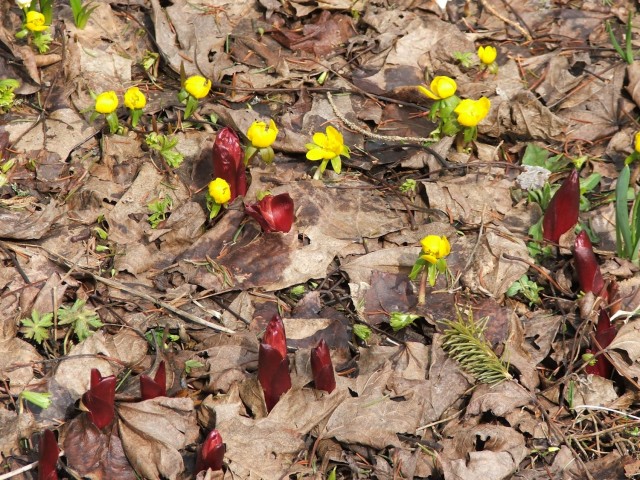
The yellow flowers of winter aconites provide a striking contrast to emerging peony shoots. Photo ©Brian Bixley
Crocus depart early. I wish we had more, great spreads of them, but they are quickly targeted by chipmunks and squirrels. Some of the bulbs are hidden away to serve as later snacks and then appear to be forgotten. It is these transplanted bulbs that actually survive in the long run, often flowering as lonely singletons far from where they were originally planted.
Gone, too, for this year, is Iris ‘Katherine Hodgkin’. It gets more attention from visitors than any of the other early-flowering offerings, its harmonious mixture of light and dark blues, yellow and white winning admiration from the coldest of winter-frozen hearts. It is unfussy as to soil though it doubtless benefits from good drainage, and will tolerate substantial summer shade. When content, it multiplies quickly and can be spread around the garden. Its flowering period is brief, but planted where the snow goes early and where it stays late, ‘Katherine Hodgkin’ can delight for two weeks.
The Blue Haze
These earliest bulbs are swiftly replaced by a secondary wave known here as the ‘Blue Haze,’ and it is they – ‘Glory-of-the-Snow (Chionodoxa), scilla and puschkinia – that now dominate the garden. They aren’t exclusively blue. White scilla combine with the traditional blue in a pointilliste tapestry on the south side of the Orchard, bunches of pink chionodoxa are found in the South Jungle, and a few white versions may be detected by the very sharp-eyed. Puschkinia scilloides is a success story, its perky pale blue-and-white flowers flooding the Roadside Rock Garden and the North Jungle (and increasingly the roadside ditches).
But the Blue Haze is merely the toile de fond for the horticultural abstract expressionism that is spring. Dwarf daffodils already punctuate the chionodoxa and scilla in the RRG, while the golden yellow flowers of the Tenby daffodil, Narcissus lobularis, are opening at the Gate; Cyclamen coum lingers in the shrub beds; hellebores, released (by me!) from their blackened foliage, produce long-lasting flowers of rose and yellow and black (‘Onyx Odyssey’, an expensive import to which we untypically succumbed); Corydalis solida forms a carpet of variations on a theme;
the golden flowers of a single plant of Adonis vernalis in the Nursery Garden neighbours ‘Onyx Odyssey’ and shares the shelter of that most elegant of shrubs, Disanthus cercidiphyllum ‘Ena Nishiki’; the rose-coloured, evocatively fragrant Spring Daphne, Daphne mezereum, that has returned to my surprise and delight to line the east side of the Driveway; its white form, growing and flowering in profusion on the Daphne Bank; and the first primulas, sky-blue denticulata peering anxiously through the corydalis, and garnet red juliae in various spots throughout the garden. And everywhere there are shoots, of the Crown Imperial, Fritillaria imperialis, already 50cm tall when not knocked down by frost or rain, and host to the dreaded lily-beetle; lilies, daily inspected, surging skyward; bloodroot, single, double and something in between; the deep purple of emerging jeffersonia; an arum, adventurous or just plain foolish; the exotic dog’s-tooth violet, Erythronium dens-canis ‘Moerheim’; trilliums, large and small, red, white, yellow. As gardeners we live on this lip of pleasure.
The Reckoning to Come
It is still too early to calculate the consequences of the past winter. That some, perhaps much, of my whining was apotropaic, intended to avert evil influence or ill luck, seems certain. Every one of the 30 or so Daphne mezereum that I had marked as doomed for destruction has survived (I plead in excuse, that a friend, living in the tropical paradise of Burlington, Ontario, wrote that she was convinced her plant had died). There is no frailer-seeming plant than the disanthus mentioned earlier which, even as I write, is preparing to unfurl its miniscule katsura-like foliage; the slim branches of Tschonoski’s maple have never been more brilliantly red; and there is reason to believe that Laburnum alpinum, Liquidambar styraciflua and Magnolia sieboldii are all in the land of the living.
Open Garden Schedule
Lilactree Farm will be ‘open’ on Sunday, May 18 and Saturday, June 21. For information, contact Brian here.
Don’t miss your chance to win a $50 gift card from Duluth Trading. See this previous post for details.


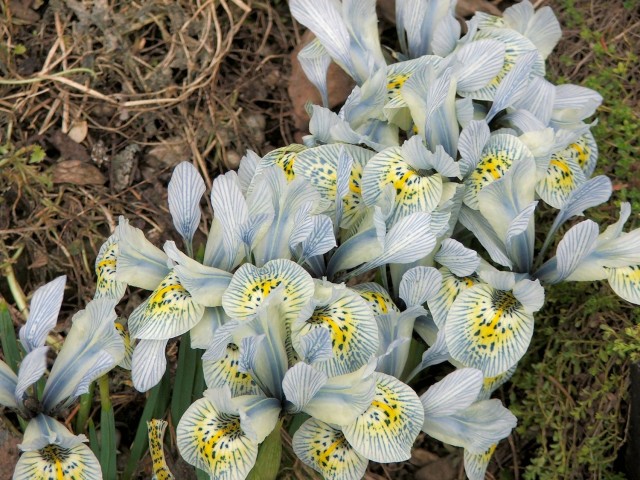
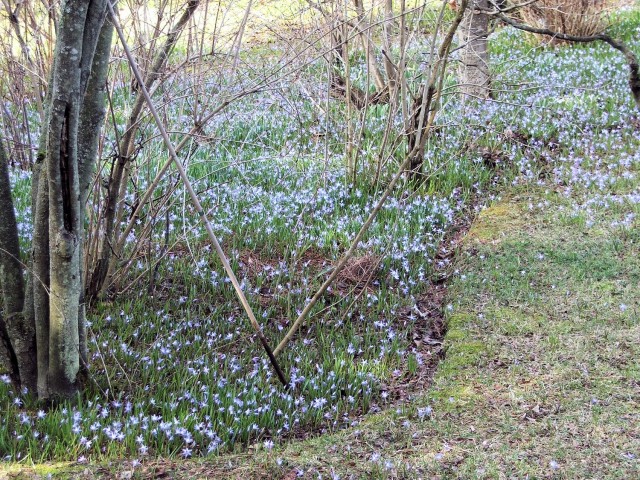
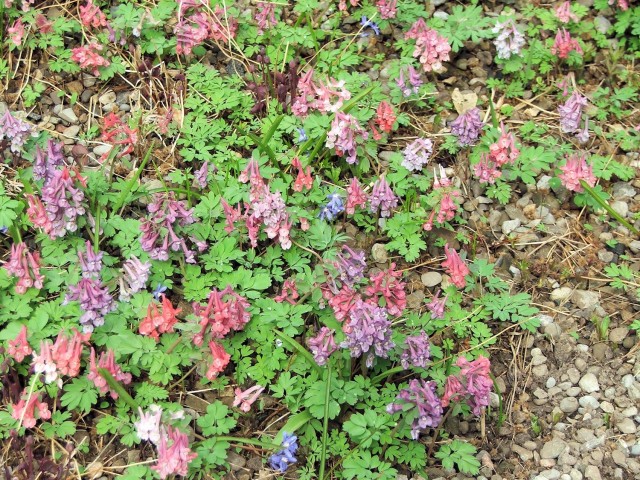
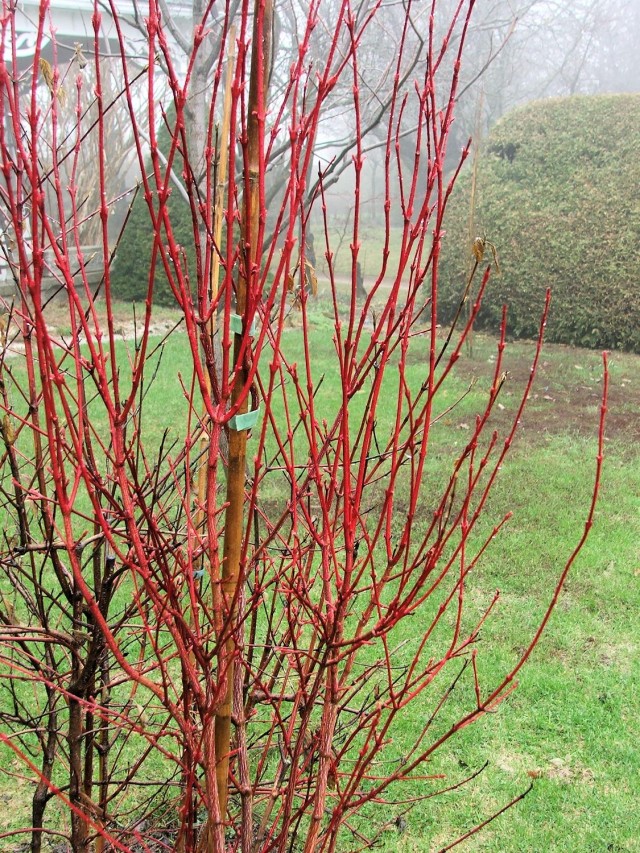



You really capture the magic and excitement of spring. Every day there’s something new emerging or blooming! I’m happy to hear your Daphne mezereums all survived. They have survived worse winters here, down to -32 degrees F, though thank goodness it wasn’t that cold this year (only -23 F on the coldest night).